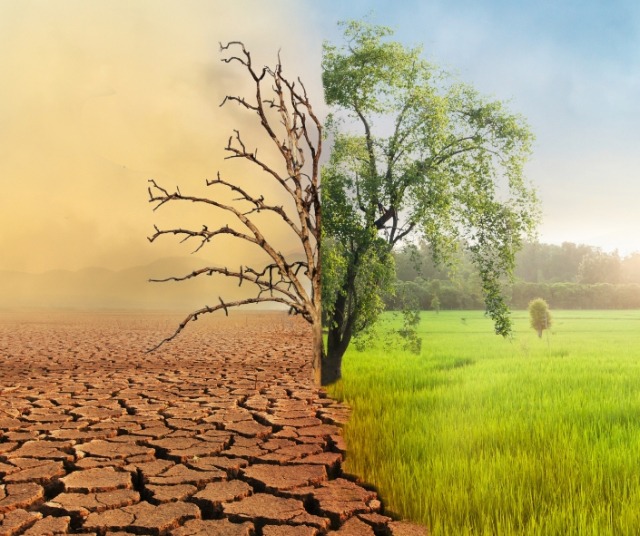Climate change is one of the most pressing challenges facing humanity today. As greenhouse gas emissions continue to increase, our planet's climate is undergoing significant changes that affect all regions of the world, including South America. Learn how climate change has affected South America in terms of temperature , precipitation , extreme events, and other significant impacts on the environment, economy, and society.
Temperature increase
One of the most evident impacts of climate change in South America is the increase in temperatures. In recent decades, the region has experienced a significant increase in the average annual temperature. This increase in temperature has direct consequences in various aspects, such as human health, agriculture and ecosystems .
In terms of health, high temperatures can increase the incidence of heat-related illnesses such as heat stroke and dehydration. In addition, rising temperatures can also affect air quality, exacerbating respiratory and cardiovascular problems.
Impacts on water resources
Climate change has also altered precipitation patterns in South America. Some regions have experienced decreased rainfall, leading to prolonged droughts and water shortages. On the other hand, in other areas more intense and frequent rains have been registered, which has generated floods and landslides.
Declining water resources have significant impacts on agriculture, which is a key sector in the economy of many South American countries. Lack of water limits crop production and affects food availability, which can lead to food insecurity and increase the prices of basic products.
Extreme weather events
This phenomenon has increased the frequency and intensity of extreme weather events in South America. Hurricanes , tropical storms, droughts, and severe heat waves are becoming more common in the region. These events have devastating consequences in terms of human lives, infrastructure and natural resources.
Hurricanes and tropical storms can cause significant damage to coastal areas, especially in countries located in the Caribbean and on the Atlantic coast of South America. In addition, prolonged droughts can have severe impacts on agriculture , causing crop and livestock losses, and increasing food insecurity in rural communities.
Ecosystem impacts
The ecosystems of South America are also experiencing significant impacts due to climate change. Glaciers in the Andes Mountains are melting at an accelerated rate, affecting freshwater supplies and endangering the region's biodiversity. Furthermore, changes in rainfall patterns are altering forest ecosystems, increasing the risk of forest fires and threatening the survival of endemic species.
Climate change also affects marine ecosystems , such as coral reefs and coastal communities. Rising ocean temperatures have caused coral bleaching, negatively affecting the diversity and health of these ecosystems. Additionally, rising sea levels endanger coastal communities and their infrastructure.
Several countries have experienced significant impacts due to climate change. Here are some of the countries that have been most affected:
Brazil: As the largest country in South America, Brazil has experienced a number of impacts from climate change. Increased deforestation in the Amazon, driven in part by the expansion of agriculture and ranching, has led to the loss of biodiversity and the release of large amounts of stored carbon. Additionally, Brazil has faced severe droughts in some regions, which has affected agricultural production and water availability.
Argentina: Recurring droughts in the pampa region have affected agricultural production, especially soybeans, one of the country's main export products. Additionally, flooding caused by heavy rains has had an impact on infrastructure and local communities.
Chile: Chile has faced a combination of prolonged droughts and increases in the frequency and intensity of forest fires . These fires have destroyed vast areas of forest, affecting biodiversity and local communities. The lack of water has also affected agriculture, especially in northern Chile, where the Atacama desert is located, one of the driest places in the world.
Peru : Climate change has had a significant impact on the glaciers of the Peruvian Andes. The accelerated melting of glaciers has led to a decrease in the supply of fresh water, affecting the availability of water for human consumption, agricultural irrigation and hydroelectric power generation. In addition, floods and landslides caused by heavy rains have affected communities and cities in different parts of the country.
Colombia: On the other hand, Colombia has had a combination of extreme weather events, such as floods and landslides, especially in the coastal regions and in the Magdalena river basin. These events have had an impact on infrastructure, agriculture and food security . In addition, climate change has affected the ecosystems of the Sierra Nevada de Santa Marta and the Amazon region, which are important in terms of biodiversity and indigenous culture.
These are just a few examples of countries in South America that have been affected by climate change. It is important to note that the impacts may vary within each country, depending on its geographic location, topography , and other factors. However, all these countries face the common challenge of adapting and mitigating the effects of climate change to protect their populations and natural resources.
It is critical that South American countries and the international community take urgent action to address climate change. The reduction of greenhouse gas emissions, the adoption of sustainable practices in agriculture and the protection of ecosystems are some of the actions necessary to mitigate the effects of climate change and adapt to ongoing changes.
Climate change is a global challenge that requires a coordinated and collective response. Environmental protection and sustainability must be priorities to ensure a secure and prosperous future for generations to come in South America and throughout the world.
